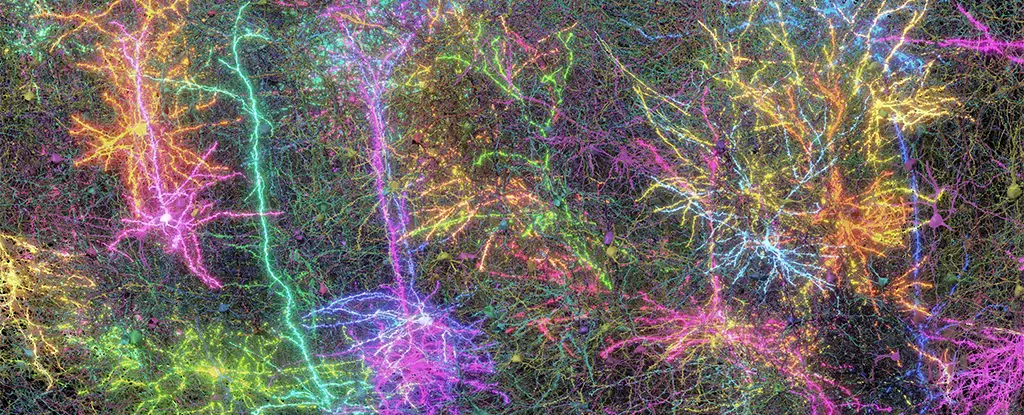Delving into the intricacies of the human brain can often feel like peering into an unfathomable abyss; the more we explore, the larger the depths seem to grow. Groundbreaking research mapping a tiny segment of a mouse’s brain has provided an extraordinary glimpse into the neural cosmos that shapes our thoughts, emotions, and actions. While the analyzed brain volume was not larger than a grain of sand, the sheer scope of the study is staggering: 84,000 neurons meticulously linked through hundreds of millions of synapses and nearly five kilometers of neural wiring. Features of the study demand our admiration but also provoke reflection on the applicability and broader implications of such scientific exploration.
Collaboration and Innovation
This ten-year-long odyssey, necessitating the coordinated efforts of over 150 researchers from 22 prestigious institutions, signals a vital trend in scientific inquiry that thrives on collaboration. Research hubs like Princeton University, Baylor College of Medicine, and the Allen Institute for Brain Science are not just centers of academia; they are interconnected citadels of innovation that produce knowledge far greater than the sum of their parts. Neuroscientist Andreas Tolias succinctly encapsulates this potential by stating the union of structural and functional data offers a panoramic view of how the brain operates—not just how it is built.
What makes this study particularly compelling is the fusion of artificial intelligence with human insight. Utilizing AI techniques alongside rigorous human checks to decipher a multi-layered and tangled neuronal network represents a promising direction for brain science. Lest we forget, deciphering neural connections isn’t merely an academic exercise; it could potentially provide the key to unraveling the tragic tapestry of neurological diseases that afflict millions.
A Glimpse into the Future
Picture this: a small mouse watching scenes from *The Matrix* while running on a treadmill. It seems trivial, yet it is this distinctive simulation that allows researchers to monitor brain activations in real-time. Dissecting the brain into 28,000 layers may sound abstract, but it reveals an experiential reality that British author David Eagleman refers to as the “complexity of the self.” As we make strides in creating detailed connectivity maps, we gain not only a deeper understanding of the biological essence of life but also a gateway to treatments for neurodegenerative conditions like dementia.
H. Sebastian Seung of Princeton has proclaimed that this connectome is the dawn of “the digital transformation of brain science.” That transformation might open avenues to identify abnormal patterns of connectivity which underlie various disorders. With this microscopic understanding of a mouse’s brain now available, a new chapter is written for neuroscientific research—one that promises hope for integrating this level of detail into human studies.
Bridging the Gap Between Species
Skepticism towards animal studies, especially concerning mice and humans, is valid. One cannot help but wonder how much we can extrapolate findings from these tiny creatures to the more complex human brain. The argument often boils down to differences in consciousness, cognition, and emotional space. However, this newfound neural map serves as a stepping stone, showcasing the immense potential of refining our understanding not just of mice, but ultimately, ourselves.
It is imperative to recognize this crucial juncture. The marvel lies not only in the capture of data but in the philosophy that drives such knowledge forth. It compels us to question the very nature of intelligence. In an era where artificial intelligence rapidly evolves, it underscores the distinct qualities of human cognition—qualities that we, through our often philosophical and ethical lenses, now strive to emulate.
The Ethical Imperative
Yet, this exploration isn’t without ethical implications. Are we on the brink of humanizing technology at the expense of dehumanizing our understanding of the delicate intricacies that make us human? It becomes essential, in the midst of such innovation, to engage in discussions that prioritize not just the advancements but also the responsibilities that come with them. Extensive understanding paves the road to power; history has shown us that knowledge misused can lead to consequences far from benevolent.
In this journey into the neural frontier, navigating the crossroads of science and ethics is paramount. As we gain new insights into the mapping of consciousness, we must forge ahead with cautious optimism, setting principles that ensure the profound mysteries of the human mind are treated with the utmost respect and consideration. In unveiling the wonders of the brain, we also unearth the responsibilities tied to such transformative discoveries.


Leave a Reply